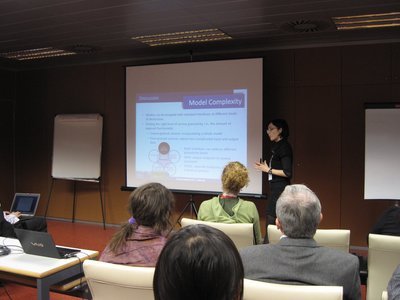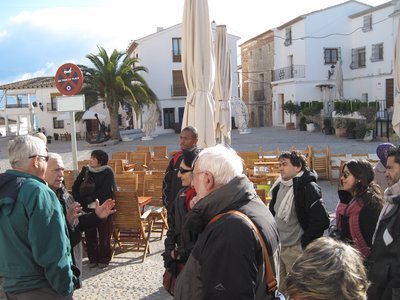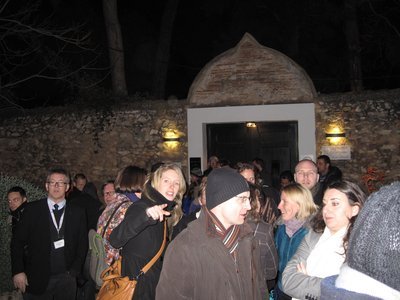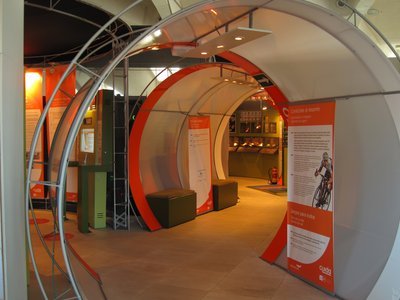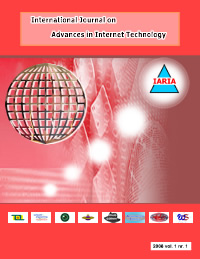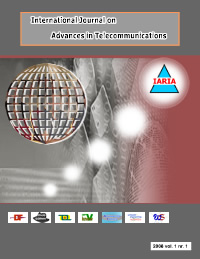CTRQ 2019 - The Twelfth International Conference on Communication Theory, Reliability, and Quality of Service
March 24, 2019 - March 28, 2019
CTRQ 2019: Tutorials
T1. Robustness Testing of Complex Software Systems to Improve Operational Reliability
Speaker: Vincent Sinclair, Bell Labs Software and Systems Reliability, Nokia, Dublin, Ireland
Authors:
Vincent Sinclair, Bell Labs Software and Systems Reliability, Nokia, Dublin, Ireland
Dr. Abhaya Asthana, Bell Labs Software and Systems Reliability, Nokia, Westford, Massachusetts, USA
Objective
Software robustness is the degree to which a system or component can function correctly in the presence of invalid inputs or stressful environmental conditions. While software testing typically does a very good job of testing the functional requirements of a solution, there is less focus on testing for software robustness. This results in software with significant robustness vulnerabilities escaping to the field, which can lead to service affecting outages.
The tutorial will be driven by the results from extensive software robustness testing workshops completed in 2017 and 2018. We will present examples of typical software robustness defects in a telecommunications network. Using these examples as input, we will explore how to build a comprehensive software robustness test strategy and test plan to prevent such defects escaping. We will explore the critical and often overlooked need for input to the robustness test plan from the systems engineers, architects, designers and the customer facing support team. Having identified the areas to focus on for software robustness testing, we will demonstrate many examples of test cases used to uncover software robustness defects. Finally, we will explore ways to extend the typical stability testing to more aggressively stress the software to discover underlying robustness type faults.
Summary
- Typical software robustness defects
- How to build a comprehensive software robustness test plan
- Break
- Building robustness test cases, with many detailed examples of test cases
- Extending the typical stability testing to discover robustness type defects
- Questions and answers
Audience
The tutorial would be beneficial for both practitioners and researchers in the testing domain.
Practitioners involved in the testing of complex software solutions, including feature testing, interface testing, performance and stress testing as well as those testing at the solution level will benefit from insights to the real-world software robustness problems in complex software systems. On the other hand, researchers on software testing will benefit from insight into real field experiences from around the world and gain deep insight into the main challenges related to robustness testing of complex software systems. Building a complete software robustness test plan needs critical input from systems engineers, architects, designers and technical support personnel and people with interest in these domains would also benefit greatly from this tutorial.
Takeaways
The tutorial will provide a solid understanding of the elements needed to build a complete software robustness test plan. It will detail how to build up a test plan through effective engagement with all the key functions along the life cycle. It provides a framework to enable teams to build their own software robustness test plans. Finally, the tutorial will demonstrate many real-world examples of software robustness test cases.
T2. Beyond WiFi-based Wireless Sensor Networks
Speaker: Prof. Dr. Sandra Sendra Compte, University of Granada, Spain
Wireless sensor networks have been consecrated, over the years, as the integral solution to solve most of the daily problems. Currently, the field of application of the WSNs ranges from basic tasks of environmental monitoring in rural, urban or domestic areas to complex intelligent systems for monitoring large cities and industrial processes, considering, at the same time, very sensitive areas/services such as health and the welfare of people.
Until very recently, one of the main technologies used to deploy this type of networks has been the IEEE 802.11 standard and all its variants. But, with the technological immersion and the expansion of the Internet of Things (IoT) concept, the intrinsic problems of the devices based on this technology are relegating it to a background level in monitoring issues. This is giving way to the era of long range (LoRa) technologies. For this reason, this tutorial aims to do a quick review of the features that Wi-Fi-based WSN offered us and to see how the natural evolution of the WSNs is leading us to the use of technologies such as LoRa /LoRaWAN.
Special attention will be paid to the operating characteristics of LoRa/LoRaWAN that make this technology so attractive showing the most appropriate application areas for this type of networks. The tutorial will also show a solution to seamlessly integrate LoRa/LoRaWAN with 4G/5G mobile networks, thus allowing mobile network operators to reutilize their current infrastructures.
Finally, this tutorial will show several current applications where the solution is currently being used, followed by a discussion on the challenges and open research issues in the area.
T3. Advanced Management and Control in 5G Sliced Networks
Speaker: Prof. Dr. Eugen Borcoci, University POLITEHNICA of Bucharest, Romania
Prerequisites: general knowledge on IP layered architectures, protocols, networks and services management, introductory knowledge on 4G/5G, SDN, ETSI-NFV, Cloud/Fog computing.
The 5G (fifth generation) is a novel architecture and also a technology of mobile networks, aiming to accommodate the current and future growing demands of users, services and applications. The 5G capabilities are expressed in terms of flexibility, high capacity, broadband access, high number of terminals, dense deployments, low response time, low energy consumption, end-to-end (E2E) services, multi-tenancy, multi-domain and so on. 5G is intended to support a large range of services applications such as broadband mobile applications, massive Internet of things, machine-type communications, mission critical, ultra-high reliability and low latency applications, content–oriented services, vehicular applications, e-health, etc. There is a wide range of research and development projects related to different areas of the 5G network in 5G Infrastructure Public-Private Partnership (5G PPP phase I and II).
In contrast with the current concept of 4G, i.e., “one network fits all”, in 5G the concept of customized network slicing is fundamental, enabling resource sharing among multiple tenants, network operators and/or services, but assuring controllable levels of slices logical isolation. The slices can be created by provisioning or on demand; they should be able to span all network segments (access, core, transport) over multiple administrative domains and multi-operator environments, offering full E2E capabilities to the users. The slicing mechanisms should enable tenants to benefit of sharing, while retaining the ability to customize their own slices. Supporting technologies allow softwarization, like Software Defined Networking (SDN), Network Function Virtualization (NFV) and cloud/fog/edge computing; they are naturally embedded in 5G architectures.
A powerful management and control system is necessary in 5G network slicing, to create and control all functionalities. The ETSI Management and Orchestration (MANO) framework is taken as a basis, with additional specific modules to support slicing. The MANO enables network flexibility and programmability, by creation and lifecycle management of virtual network slices tailored to the needs of 5G verticals, expressed in the form of Mobile Virtual Network Operators (MVNOs) for automotive, eHealth, massive IoT,or massive multimedia broadband. The management and control system should react in real-time, based on a hierarchy of complex decision making techniques that analyse historical, temporal and frequency network data. Recently, cognitive network management techniques are proposed as a solution for the above requirement, in which machine learning is used to develop self-aware, self-configuring, self-optimization, self-healing and self-protecting characteristics of the overall management system.
This tutorial offers an overview on the above mentioned advanced management and control techniques in 5G slicing.

